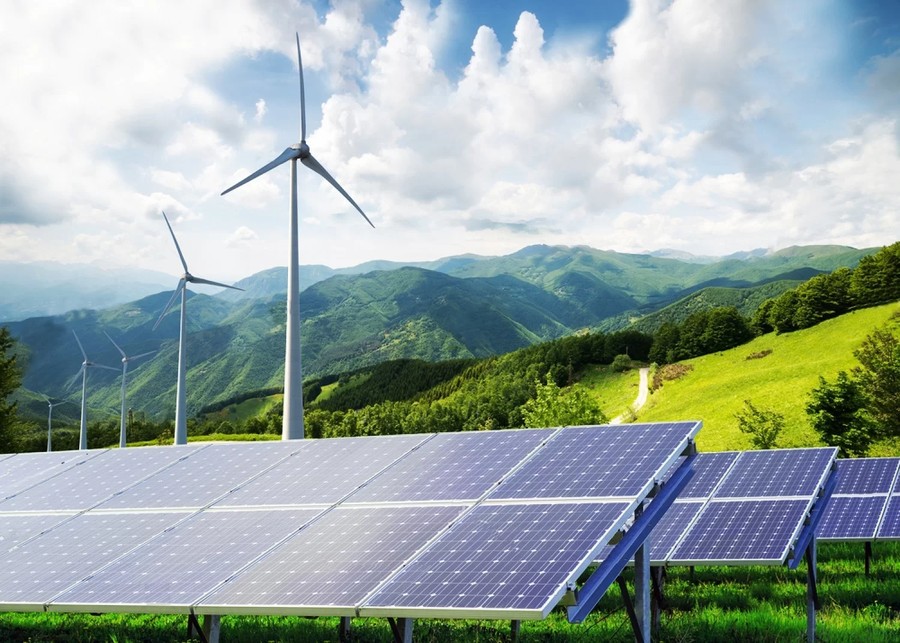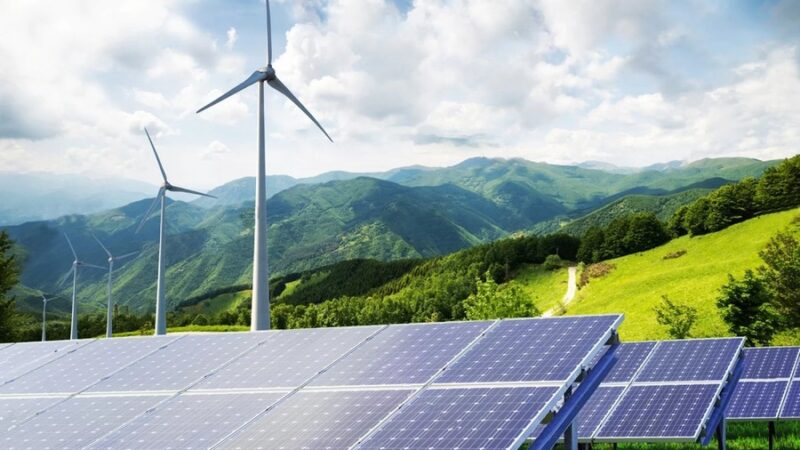Power derived from natural sources that regenerate faster than we use them forms the basis of a sustainable future. These resources, like sunlight and wind, are constantly available around us.
This stands in stark contrast to finite fossil fuels such as coal, oil, and gas. These traditional fuels take millions of years to form, making them a limited resource for our world.
A significant global issue is the dependency on imported fuels. Roughly 80% of the world’s population lives in countries that must buy these resources from others, creating economic and security concerns. Adopting cleaner alternatives is crucial for addressing climate challenges and achieving greater independence.
This guide will explore these powerful alternatives in detail. It will cover their environmental benefits, economic advantages, and practical uses across different sectors.
Key Takeaways
- Natural power sources regenerate quickly, unlike finite fossil fuels.
- Sunlight and wind are abundant examples of these sustainable resources.
- Fossil fuels are non-renewable and take millions of years to form.
- Most of the world relies on importing these traditional fuels.
- Shifting to renewable energy sources enhances energy security and addresses climate issues.
- This transition supports economic stability and sustainable development globally.
Renewable Energy: A Sustainable Future
The transition to sustainable power involves capturing naturally recurring phenomena for continuous electricity production. This approach forms the foundation of modern energy systems that can meet global demands without exhausting finite resources.
Understanding the Fundamentals of Renewable Energy
Natural sources like solar, wind, and hydropower operate through perpetual cycles that replenish themselves. These systems integrate seamlessly into existing infrastructure without depleting the earth’s limited reserves.
The core mechanism relies on harnessing ongoing natural processes. This creates a reliable source of power generation that contrasts sharply with traditional methods.
Environmental Impact and Job Creation in Clean Energy
Burning fossil fuels generates substantial greenhouse gas emissions, contributing to climate challenges. Sustainable alternatives produce significantly lower emissions while addressing air quality concerns.
The clean energy sector now employs nearly 35 million people worldwide. This represents three times more employment opportunities than traditional fossil fuel industries.
These sustainable solutions have become more cost-effective in most markets. They simultaneously tackle environmental issues while stimulating economic growth through job creation.
The Rise of Renewable Energy in the Modern World
Historically anchored in coal, oil, and gas, the world’s power supply is now pivoting towards cleaner alternatives. This global movement marks a decisive effort to end reliance on fossil fuel-based systems that have dominated since the Industrial Revolution.
Transitioning from Fossil Fuels to Low-Carbon Alternatives
Many countries recognise that continued burning of fossil fuels drives climate change. To reduce harmful CO2 emissions and local air pollution, a rapid shift to low-carbon sources is essential.
While fossil fuels still account for nearly 60% of global electricity generation, the momentum has shifted. Between 2015 and 2024, capacity from cleaner sources grew by approximately 2,600 gigawatts (GW)—a 140% increase. In stark contrast, fossil fuel capacity expanded by only 640 GW.
This transition is not just an environmental imperative but an economic one. Nations are building more resilient power systems using domestic resources, reducing dependence on imported oil and gas.
The International Renewable Energy Agency (IRENA) projects that 90% of the world’s electricity can come from these sustainable sources by 2050. The data confirms the transition is already accelerating across the globe.
Innovations in Renewable Energy Technologies
Recent engineering advancements have dramatically improved the efficiency and affordability of clean power systems. These breakthroughs are transforming how countries approach electricity generation and sustainable development.
Advancements in Solar, Wind, and Hydropower Systems
Solar power technologies have achieved remarkable cost reductions. Solar generation is now 41% cheaper than fossil fuel alternatives, making it highly competitive for large-scale electricity production.
Wind energy innovations show similar progress. Offshore wind developments have seen 53% cost reductions compared to conventional power sources. Onshore wind continues expanding rapidly across many nations.
Hydropower remains a foundational technology for renewable generation. Modern systems incorporate improved efficiency and environmental compatibility while maintaining reliable electricity output.
Modern Biofuels and Geothermal Energy Breakthroughs
Biofuel technologies have advanced significantly in transport applications. Crops like corn, sugarcane, and hemp now produce bioethanol and biodiesel for commercial energy markets.
Geothermal energy provides consistent baseload power across various regions. These systems complement variable technologies like solar and wind within integrated energy networks.
Continued innovation drives performance improvements across all renewable technologies. Each breakthrough contributes to more efficient and accessible clean power solutions worldwide.
Global Case Studies and Clean Energy Initiatives
Concrete examples from around the globe demonstrate the accelerating shift towards sustainable power. These initiatives highlight the economic and environmental benefits being realised by various countries and companies.
Success Stories from Jones And Baker Ltd
Jones And Baker Ltd showcases how corporate leadership drives change. Their projects in the United Kingdom have significantly increased local clean energy generation.
This work provides a blueprint for other organisations. It proves that commercial success and environmental responsibility can go hand in hand.
Recent Insights from Jones & Baker
Analysis from Jones & Baker confirms the strong economic case for these technologies. Their research indicates that investment is yielding substantial returns.
They highlight how strategic policy support is crucial for continued growth. This helps overcome initial barriers to deployment.
International Policy and Investment Trends
Global financial commitment is now firmly behind cleaner alternatives. In 2024, a record $2 trillion was invested in clean energy.
This was $800 billion more than spending on fossil fuel production. It reflects a 70% increase over the past decade.
This financial shift supports ambitious international goals. The International Renewable Energy Agency projects that 90% of the world’s electricity could come from renewables by 2050.
This transition also addresses urgent health concerns. The World Health Organization links air pollution, mainly from burning fossil fuels, to 7 million premature deaths yearly.
Global Energy Transition: Key Metrics Comparison
| Metric | Clean Energy | Fossil Fuels |
|---|---|---|
| Global Investment (2024) | $2.0 Trillion | $1.2 Trillion |
| Job Creation per $1 Invested | 3x more jobs | Baseline |
| Sector Employment (2023) | 16.2 Million | ~5.4 Million (estimated) |
| Contribution to GDP Growth (2023) | 10% | Not specified |
Conclusion
The global energy landscape is undergoing its most significant transformation in over a century. This guide has demonstrated how sustainable power sources offer comprehensive solutions to both environmental and economic challenges.
Transitioning from fossil fuels to cleaner alternatives provides nations with greater energy security and economic resilience. These technologies create systems less vulnerable to market shocks while driving job creation and inclusive growth.
With approximately one-third of global electricity already coming from renewables, the pathway to 90% clean power by 2050 appears achievable. The continued advancement of these technologies ensures they remain cost-competitive while addressing climate concerns.
Diversifying the energy mix through solar, wind, and other renewable sources builds foundation for stable, sustainable futures. This approach balances environmental responsibility with economic prosperity worldwide.
FAQ
What are the main benefits of shifting to clean power sources?
The primary advantages include a significant reduction in harmful greenhouse gas emissions, which helps combat climate change. This transition also improves air quality by cutting down on pollution from burning fossil fuels. Furthermore, it enhances energy security by diversifying a country’s power mix and can stimulate economic growth through job creation in new energy technologies.
How do modern energy systems like offshore wind and solar power work?
Technologies such as offshore wind utilise turbines placed at sea to capture wind energy, converting it into electricity. Solar power systems use photovoltaic panels to transform sunlight directly into electrical power. These sources provide a consistent and increasingly cost-effective supply of generation capacity without depleting natural resources.
Why is it important for countries to end reliance on oil and gas?
Moving away from fossil fuel production is crucial for achieving global climate targets. Dependence on oil and gas contributes heavily to carbon emissions and air pollution. Investing in alternatives allows nations to build more resilient and sustainable energy systems, protecting them from volatile fuel markets and supply disruptions.
What role does innovation play in the development of clean technologies?
Continuous advancements are vital for improving the efficiency and affordability of power generation from sources like wind, solar, and modern biofuels. Breakthroughs in these areas, supported by organisations like the International Renewable Energy Agency, help accelerate the global adoption of a cleaner energy mix and drive down costs for consumers.







